#ContentPlanning
Text
The Ultimate Content Editing Checklist
There are many things to check for before content is ready for publishing, and a thorough content editing checklist can help.
The first thing you need to do as a freelance editor and content creator is to stop taking errors in your content personally.
It doesn’t matter if you’re the #1 speller in the entire world, errors just happen, and they aren’t necessarily anyone’s fault.
Just because a “there” is where a “their” should be, that doesn’t mean you don’t know the difference between there and their.
There’s a reason editing and editing by multiple people is an essential step in the publication process.
Errors just happen. So free yourself from shame and stop taking it personally.
Editing is a technical process that requires a technical approach. Think of editing like a production line.
Getting error-free content is all about building an air-tight production line where each step can help pick up any errors left over from the previous step.
That’s why I don’t just have one master editing checklist.
I have six.
#editing#writingtips#contentcreation#contentstrategy#contentmarketing#copywriting#digitalmarketing#marketingtips#contentplanning#contentediting#checklist#contenttips#contentwriters#writingcommunity#contentcreationtips#contentmanagement#contentmarketingstrategy#bloggingtips#contentoptimization#SEO#contentwriter#contentcreationstrategy
6 notes
·
View notes
Text
youtube
Top 50 AI Article Outlines Generator Tools
#ArticleOutlines#AIContentTools#WritingEnhancement#ContentPlanning#AIWritingAid#StructuredWriting#EfficientContentCreation#Freeeducation#FreeLearning#free#Youtube
0 notes
Text
Content Marketing Editorial Calendar Creation Workshop: Organizing Content for Success
Welcome to our Content Marketing Editorial Calendar Creation Workshop, where we will explore strategies for organizing content for success. In today's fast-paced digital world, having a well-organized editorial calendar is essential for planning and executing effective content marketing campaigns that drive engagement and conversions.

Understanding Content Marketing Editorial Calendars:
A content marketing editorial calendar is a strategic tool that helps businesses plan, organize, and schedule content creation and distribution efforts over a specified period. By having a clear roadmap of content topics, formats, and publication dates, businesses can ensure consistency in messaging, target relevant audience segments, and maximize the impact of their content marketing efforts.
Key Components of an Editorial Calendar:
An effective editorial calendar typically includes the following components:
Content Themes and Topics: Identifying overarching themes and specific topics that align with business objectives and resonate with target audience interests.
Content Formats and Types: Determining the types of content to be created, such as blog posts, videos, infographics, webinars, or podcasts.
Publishing Schedule: Establishing a consistent publishing schedule based on audience preferences, content performance data, and industry trends.
Content Promotion and Distribution: Planning how and where content will be promoted and distributed across various channels, including social media, email newsletters, and third-party platforms.
Importance of Alignment with Business Goals and Audience Needs:
It's crucial for editorial calendars to align with overarching business goals and objectives, as well as the needs and preferences of the target audience. Content should be tailored to address specific pain points, challenges, and interests of the target audience segments, ultimately driving engagement, loyalty, and conversions.
Tips for Effective Editorial Calendar Creation:
Conducting Content Audits and Market Research: Analyzing existing content assets, conducting competitive research, and identifying gaps and opportunities in the market.
Setting Clear Goals and Objectives: Establishing measurable goals and objectives for each piece of content, such as increasing website traffic, generating leads, or driving sales.
Establishing a Consistent Publishing Schedule: Mapping out a publishing schedule that balances frequency with quality, taking into account resource constraints and audience preferences.
Assigning Responsibilities and Deadlines: Clearly defining roles and responsibilities for content creation, review, and publication, and setting deadlines to ensure timely delivery.
Incorporating Seasonal and Trending Topics: Anticipating seasonal trends, industry events, and cultural moments to capitalize on relevant topics and themes.
Utilizing Tools and Templates for Organization: Leveraging content management tools, editorial calendar templates, and project management software to streamline the planning and execution process.
Leveraging Editorial Calendars for Content Success:
A well-executed editorial calendar can streamline content creation and production processes, enhance collaboration and communication among team members, improve content consistency and quality, maximize content promotion and distribution efforts, and provide valuable insights through monitoring and analyzing performance metrics.
In conclusion, a content marketing editorial calendar is a powerful tool for organizing content creation efforts, aligning with business goals and audience needs, and driving success in content marketing initiatives. By following the tips and strategies outlined in this workshop, businesses can create and execute effective editorial calendars that deliver results and achieve their content marketing objectives.
#ContentMarketing#EditorialCalendar#ContentPlanning#DigitalMarketing#ContentStrategy#MarketingStrategy#ContentCreation#ContentOrganization#ContentManagement#MarketingCalendar#ContentCalendar#ContentPlanner#MarketingPlanning#ContentDevelopment#ContentStrategyPlanning#ContentMarketingTips#DigitalContent#MarketingWorkshop#ContentCreators#ContentSuccess
1 note
·
View note
Text
Master the Art of Content Creation with These Simple Tips

Content creation is a crucial aspect of any digital marketing strategy. Creating high-quality, engaging content is essential to attract and retain audiences, build brand awareness, and drive business growth.
Whether you're new to content creation or looking to take your skills to the next level, this article will provide you with simple tips and strategies to help you master the art of content creation. We'll cover everything from content planning and optimization to distribution and promotion, giving you a comprehensive overview of the key elements of a successful content strategy.
Key Takeaways
- Content creation is a vital component of any digital marketing strategy.
- Creating high-quality, engaging content is essential for attracting and retaining audiences.
- A successful content strategy involves planning, optimization, distribution, and promotion.
- Continuous learning and improvement are key to mastering the art of content creation.
- Stay tuned for tips and strategies to help you improve your content creation skills.
Understanding Content Creation and Its Significance
Content creation is the process of producing and sharing valuable information to attract and retain a clearly defined audience. It is a critical component of content marketing, which focuses on creating and distributing relevant content to attract and engage a target audience and ultimately drive profitable customer action.
A solid content strategy is essential to ensure that your content creation efforts align with your business goals and resonate with your audience. A well-executed content strategy can increase your brand awareness, establish your authority in your industry, and ultimately drive conversions.
"Content marketing is a commitment, not a campaign." -Jon Buscall
Creating a content strategy involves identifying your target audience, determining your unique value proposition, and establishing your brand voice and tone. It also includes developing a plan for content creation, distribution, and promotion and regularly measuring and analyzing your results to refine your approach.
Developing an Effective Content Generation Plan
Creating great content starts with a well-designed and executed content generation plan. A robust plan helps you identify your audience, research topics that resonate with them and create content that engages them. A well-executed plan saves time, effort and resources, and sets you up for success in the long run.
Identify your target audience
The first step in developing a content generation plan is identifying your target audience. Your audience determines the tone, style and content that you create. Take time to understand their pain points, interests, and values. Creating buyer personas can help you create targeted content that’s relevant for your audience.
Conduct research
The next step is conducting research to identify content ideas that resonate with your audience. Look at their search patterns, social media behavior and purchase history. You can also conduct surveys, focus groups, and online polls to collect data on their preferences. Use this data to inform your content generation plan.
Brainstorm Content Ideas
Once you have a good understanding of your audience and their preferences, it’s time to brainstorm content ideas. Consider creating different types of content, such as blog posts, infographics, videos, and webinars. Your content should be informative, engaging, and of value to your audience.
Content Type
Pros
Cons
Blog Posts
Easy to create, SEO friendly, promotes thought leadership
Can be time-consuming, requires consistent updates
Infographics
Visually engaging, easy to share, appeals to different learning styles
Can be expensive, requires design skills
Videos
Engaging, easy to share, appeals to different learning styles
Can be expensive and time-consuming to produce
Create a Content Calendar
With a list of content ideas, it’s time to organize them to create a content calendar. A content calendar helps you plan and execute your content generation plan. It also helps you avoid last-minute scrambling for content ideas. Your content calendar should include the type of content, the topic, the target audience, the publishing date, and the distribution channels.
Conclusion
An effective content generation plan is the foundation of any successful content marketing strategy. By identifying your target audience, conducting research, brainstorming content ideas, and creating a content calendar, you ensure that your content is relevant, engaging, and valuable to your audience. With a well-executed plan, you will drive traffic, generate leads, and build a loyal following.
Optimizing Your Content for Maximum Impact
Creating high-quality content is only half the battle when it comes to successful content marketing. To ensure that your content reaches the right audience and resonates with them, it's crucial to optimize it for both search engines and users.
Perform Keyword Research
Before creating your content, it's essential to perform keyword research to identify the terms and phrases your target audience is searching for on search engines. Once you have a list of keywords, strategically incorporate them into your content to increase its chances of appearing in search results.
Utilize On-Page Optimization Techniques
On-page optimization refers to the elements of your content that can be optimized for both search engines and users. This includes the page title, meta description, header tags, and image alt tags. By including relevant keywords and making your content easy to navigate, you can improve its visibility and user experience.
Create Engaging, Shareable Content
In addition to optimizing your content for search engines, it's crucial to make it engaging and shareable for users. This includes incorporating multimedia elements such as images and videos, formatting your content for readability, and providing value to your audience.
"Optimizing for search and user experience should go hand-in-hand. It's all about creating content that is both helpful and discoverable."
- John Smith, SEO Expert
By following these optimization techniques, you can ensure that your content is reaching the right audience, providing value, and driving engagement. Remember to continuously monitor and refine your content to stay ahead of the competition and stay relevant in your industry.
Effective Content Distribution Strategies
Your content creation efforts are only valuable if they reach the right audience. That's where content distribution comes in. By leveraging various platforms and channels, you can ensure that your content reaches a wider audience, increasing engagement and driving traffic to your website.
Social Media
Social media is one of the most effective channels for distributing your content. Platforms like Facebook, Twitter, and LinkedIn allow you to share your content with your followers, who can then share it with their networks. To maximize the impact of your social media efforts:
- Choose the right platforms based on your target audience and content type
- Create engaging headlines and visuals that encourage sharing
- Post at optimal times for each platform
- Engage with your followers and respond to comments
Email Marketing
Email marketing can also be an effective way to distribute your content. By sending targeted emails to your subscribers, you can drive traffic to your website and keep your audience engaged. To make the most of your email marketing:
- Segment your email list based on interests and behaviors
- Use catchy subject lines that encourage opens
- Personalize your emails with dynamic content
- Include clear calls-to-action that encourage clicks
Influencer Partnerships
Collaborating with influencers in your industry can help you reach new audiences and build credibility. By partnering with influencers, you can get your content in front of their followers, who are likely to be interested in your brand. To leverage influencer partnerships:
- Identify influencers with a relevant and engaged audience
- Create content that aligns with their brand and audience
- Reach out to them with a personalized pitch or proposal
- Provide value to the influencer in exchange for their promotion
With these effective content distribution strategies, you can increase the reach and impact of your content, driving engagement and ultimately growing your business.
Promoting Your Content for Increased Engagement
Creating high-quality content is crucial, but promoting it effectively is just as important. Without effective promotion, your content may never reach its intended audience, and all your hard work will be for nothing. In this section, we'll explore some strategies for promoting your content to drive engagement and increase visibility.
Utilize Paid Advertising
Paid advertising can be a highly effective way to increase your content's reach and drive traffic to your website. Platforms like Google Ads and social media advertising allow you to target specific audiences based on demographics, interests, and behaviors. This ensures that your content is being shown to the right people, increasing the likelihood of engagement and conversion.
When using paid advertising, it's important to develop clear goals and a budget to ensure that you're getting the most out of your investment. It's also important to continuously monitor and adjust your campaigns based on performance data to ensure that you're maximizing your ROI.
Promote on Social Media
Social media is an invaluable tool for promoting your content and reaching a wider audience. Platforms like Facebook, Twitter, and Instagram allow you to share your content with your followers and engage with them in real-time. Using relevant hashtags and tagging influencers in your posts can also help to increase visibility and reach.
When promoting on social media, it's important to tailor your content to each platform and its audience. For example, posts on Twitter should be shorter and more concise, while posts on Facebook can be longer and more detailed. It's also important to engage with your followers by responding to comments and messages, and sharing user-generated content to build a sense of community.
Engage in Outreach Efforts
Outreach efforts, such as guest posting and influencer partnerships, can be highly effective ways to promote your content and reach new audiences. By collaborating with others in your industry, you can tap into their existing audience and leverage their credibility to increase your own visibility.
When engaging in outreach efforts, it's important to approach potential partners with a clear value proposition and a well-defined goal in mind. It's also important to ensure that your content is of high quality and relevance to the partner's audience.
Email Marketing Campaigns
Email marketing campaigns can be a highly effective way to promote your content to your existing audience and drive engagement. By developing targeted email campaigns based on interests and behaviors, you can ensure that your content is being delivered to the right people at the right time.
When developing email marketing campaigns, it's important to use attention-grabbing subject lines and to focus on creating value for the reader. Providing exclusive content or discounts can help to increase engagement and drive conversions.
All of these strategies can be highly effective in promoting your content and driving engagement. However, it's important to test and refine your approach over time to ensure that you're getting the most out of your efforts.
Managing Your Content Workflow Efficiently
Managing your content workflow efficiently is essential to ensure a consistent stream of high-quality content. Whether you're a one-person team or part of a larger organization, implementing effective content management strategies will help you stay on top of your content creation goals.
"Good content is not storytelling. It's telling your story well." - Ann Handley
Here are some tips to help streamline your content workflow:
- Create an Editorial Calendar: An editorial calendar is a great way to plan and organize your content. This will allow you to see what content needs to be created, who is responsible for creating it, and when it needs to be published. There are numerous tools available to help you create an editorial calendar, including Trello, Asana, and CoSchedule.
- Use Content Scheduling Tools: Content scheduling tools can help you save time by allowing you to schedule your content in advance. This ensures that your content is published consistently and on time. Some popular content scheduling tools include Hootsuite, Buffer, and Later.
- Collaborate Effectively: Collaboration is important, especially when working on larger content projects. Using collaboration tools like Google Docs, Dropbox, and Trello can help you work more efficiently with your team.
By implementing these tips and utilizing available content management tools, you can ensure that your content workflow is efficient and productive.
Mastering the Art of Content Writing
Content writing is an essential aspect of successful content creation and marketing. It requires a combination of creativity, research, and attention to detail to craft high-quality content that engages readers and meets the needs of search engines algorithms. Here are some tips to help you master the art of content writing:
1. Start with a Clear Strategy
Before you start writing, it's essential to have a clear understanding of your content strategy. Identify your target audience and their needs, determine the best format and tone for your content, and decide on the key messages you want to convey. With a strategy in place, you'll be able to write with purpose and direction.
2. Write for Your Audience
It's crucial to keep your audience in mind when writing content. Think about what they need and want, and write in a way that speaks to them directly. Use language that is easy to understand, and avoid industry jargon or technical terms unless your audience is familiar with them.
3. Use Engaging Headlines and Subheadings
Your headlines and subheadings should entice readers to continue reading. Use action words and descriptive language to grab their attention and clearly communicate the main point of the section.
4. Use Formatting to Enhance Readability
Break up your content into easy-to-digest chunks using formatting techniques such as bullet points, numbered lists, and short paragraphs. Use bold and italics to highlight key points and draw the reader's eye to important information.
5. Tell a Story
People love stories, and incorporating storytelling into your content can make it more engaging and memorable. Use anecdotes, personal experiences, and case studies to illustrate your points and make your content more relatable.
6. Incorporate Keywords Strategically
Keywords are essential for optimizing your content for search engines, but overusing them can make your content seem spammy and detract from the reading experience. Use keywords strategically, placing them in the title, introduction, and throughout the content in a natural and relevant way.
7. Edit and Proofread Carefully
Before publishing your content, it's essential to edit and proofread carefully. Check for spelling and grammar errors, ensure that your content flows logically, and remove any extraneous information or repetition.
With these tips in mind, you can create compelling content that engages your audience, satisfies search engine algorithms, and helps you achieve your content marketing goals.
Analyzing and Refining Your Content Strategy
Creating a content strategy is just the first step in building a successful online presence. Regular analysis and refinement are necessary to ensure that your strategy is effective and aligned with your goals. Here are some tips for analyzing and refining your content strategy:
Measure Success
The first step in analyzing your content strategy is to measure your success. Use tools such as Google Analytics to track your website traffic and engagement metrics such as bounce rate, time on page, and social shares. Set goals for your content, such as increasing traffic or generating leads, and track progress towards those goals.
Perform Content Audits
Performing regular content audits can help you identify what is working and what needs improvement in your content strategy. Look at metrics such as engagement, traffic, and conversions to determine which pieces of content are resonating with your audience. Use this information to guide future content creation.
Make Data-Driven Decisions
Use the data you collect from measuring success and performing content audits to make data-driven decisions about your content strategy. For example, if you notice that a particular type of content is generating a lot of engagement, consider creating more of that type of content. If a certain topic is not resonating with your audience, consider pivoting to a new topic that is more relevant.
Stay Up-to-Date with Industry Trends
The world of content marketing is constantly evolving. To stay ahead of the curve, make sure to stay up-to-date with industry trends and best practices. Attend conferences, read industry blogs, and network with other content creators to stay informed about the latest trends and strategies.
Continually Refine Your Strategy
Based on your data and industry knowledge, continually refine your content strategy to ensure that it remains effective and relevant. Don't be afraid to experiment with new formats, platforms, or topics. Over time, you'll develop a deep understanding of what works best for your audience and your brand.
Leveraging Content Marketing for Business Growth
Content marketing has become an essential component of modern business growth strategies. By creating and distributing valuable content, businesses can increase brand awareness, establish thought leadership, and attract and engage their target audiences.
Effective content marketing requires a well-planned strategy that aligns with business goals. At the core of this strategy is a deep understanding of the target audience and the ability to create content that resonates with them.
One key aspect of content marketing is lead generation. By creating content that offers value to potential customers, businesses can capture leads and nurture them through the sales funnel. This can include things like eBooks, webinars, and other types of gated content that require contact information to access.
Another important aspect of content marketing is establishing thought leadership.
Read the full article
#contentcreation#contentdistribution#contentgeneration#contentmanagement#contentmarketing#contentoptimization#contentplanning#contentpromotion#contentstrategy#contentwriting
0 notes
Link
5 Tips for Utilizing YouTube Trends in Your Content Planning
0 notes
Text
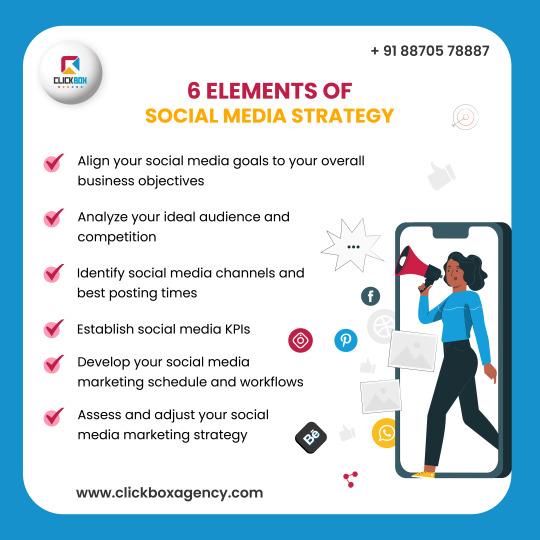
🔍 Unlock the Secrets to Social Media Success! Discover the 6 Essential Elements of a Winning Strategy.
From Content Planning to Audience Engagement, We've Got You Covered! 🌟
☎️ Call us at +91 88705 78887
🌐 Visit our website at https://www.clickboxagency.com/social-media-marketing-agency-india/
#SocialMediaStrategy#DigitalMarketingTips#ContentPlanning#AudienceEngagement#Analytics#BrandVisibility#SocialMediaMarketing#DigitalMarketing#SMM#ContentMarketing#OnlineMarketing#SocialMediaTips#MarketingStrategy#DigitalStrategy#SocialMediaManagement#InfluencerMarketing#CommunityManagement#ContentCreation#Engagement#BrandAwareness#SEO#PPC#InstagramMarketing#FacebookAds
0 notes
Text
The Power of Content Planning and Editorial Calendars

How a Strategic Approach Can Transform Your Business Blog
In today's fast-paced digital world, every business strives to make its mark online. Blogs have emerged as powerful tools for achieving this, offering a platform to engage with the audience, boost brand visibility, and drive traffic. But, to excel in the digital landscape, it's not just about churning out content - it's about a well-thought-out plan. Let’s explore how content planning and editorial calendars can revolutionise your business blog strategy.
Meet Ruth, a dynamic entrepreneur and the driving force behind her boutique fashion store, 'Chic Threads,' faced a dilemma at the heart of many business owners' aspirations. With her finger firmly on the pulse of the fashion world, Ruth quickly recognised the immense potential of a business blog to connect with her customers and showcase her unique collection. However, as she explored the vibrant world of online commerce, she soon realised that maintaining a consistent online presence was a demanding task that seemed challenging, given her packed schedule.
Ruth's story is, above all, one of determination. She was unwavering in her commitment to delivering the best to her clientele, both in her physical store and through her digital presence. She understood the importance of staying connected with her audience through her blog, as it was the bridge that brought the essence of 'Chic Threads' to life in the digital world. Still, the relentless demands of entrepreneurship frequently left her caught in a whirlwind of responsibilities, leaving her with little time to nurture her online presence.
It was during a quiet evening at her boutique that Ruth's breakthrough moment occurred. As she surveyed the beautiful garments adorning her store, she realised that her blog had the potential to be an extension of the elegance and charm that 'Chic Threads' embodied. Her desire to connect with her customers on a deeper level and share her passion for fashion drove her to explore strategies that could make this vision a reality.
With newfound determination, Ruth decided to embrace content planning and editorial calendars. Content planning allowed her to strategically map out her content well in advance, giving her a clear vision of what her blog would offer her customers. She began to craft a content plan that revolved around seasonal fashion trends, style tips, and behind-the-scenes glimpses of her boutique. This approach not only helped her stay aligned with her brand's message but also enabled her to deliver posts that resonated deeply with her target audience, many of whom were fashion enthusiasts seeking inspiration.
However, the transformation continued with content planning. Editorial calendars quickly became her trusted allies in this endeavour. These structured timelines provided Ruth with a means to schedule not just blog posts but also coordinate social media updates and meticulously plan her email newsletters. The beauty of it was in the simplicity and effectiveness of these calendars – they ensured that Ruth's content was consistent but also timely and relevant to her audience.
With these strategies in place, Ruth was in control of her online presence. She could now focus on creating valuable, engaging content, knowing it was reaching the right people at the right time. The results of this transformation were nothing short of remarkable. Her blog became a powerful tool for connecting with her customers, boosting her brand's visibility, and driving more traffic to 'Chic Threads' than ever.
Ruth's story underscores the power of determination and the transformative impact of a well-thought-out content strategy. Business owners worldwide can relate to this journey, which holds the key to success in the ever-competitive world of digital business.
Content planning is about strategising the type of content you want to create, identifying your target audience, and setting clear goals. This strategic approach allows you to maintain a focused and purpose-driven blog. Ruth realised that having a content plan allowed her to align her blog content with her brand and deliver posts that truly resonated with her customers.
Editorial calendars are the natural complement to content planning. They serve as detailed roadmaps, guiding your content creation journey. For Ruth, this meant having a well-structured schedule for her blog posts, ensuring that her content was consistent, relevant and timely.
In a world where consistency and relevance are keys to success, using content planning and editorial calendars became Ruth's secret weapon. She could now plan her content weeks, guaranteeing a steady stream of engaging posts that kept her readers returning for more.
Why should your business explore content planning and editorial calendars? Imagine having a blog that consistently connects with your audience, a blog that aligns with your brand, and a blog that drives traffic. The question is, can you afford to overlook these powerful tools?
In the ever-evolving digital landscape, taking a strategic approach to your business blog can be the game-changer you've been searching for. The beauty of content planning and editorial calendars lies in their ability to give your blog a sense of direction, keeping you on track and ahead of the competition.
Need help? Contact us HERE for a free 1hr consultation
0 notes
Text
🤖✍️ Have you experienced the magic of Chat GPT for content creation?

Delve into our revelations about the prowess of artificial intelligence in the realm of text manipulation:
🔍 Unerring translation of single words and text fragments into English
📝 Fashioning succinct text snippets from the ground up, tailored to your theme
🔁 Rephrasing, resizing, and metamorphosing text, adapting its original essence
📰 Summoning an array of headlines on demand, each with its unique flair
💌 Crafting emails that span the spectrum, from marketing campaigns to heartfelt cover letters
📚 A grammar maestro, reaching its zenith in the realm of English
📅 Masterminding content blueprints for social media jaunts or grandiose marketing escapades
Does the prospect of weaving novel services into your workflow captivate you? 🚀 Together, let's amplify our wisdom and sculpt triumphant narratives! Be part of our journey: sign up at https://puzzlax.com and engage in a streamlined onboarding rendezvous. 📩👋
#chatgpt#contentcreation#AIwriting#translation#textgeneration#rewriting#grammarcheck#contentplanning#socialmediacontent#marketingcampaigns#newservices#insights#success#joinus
0 notes
Text
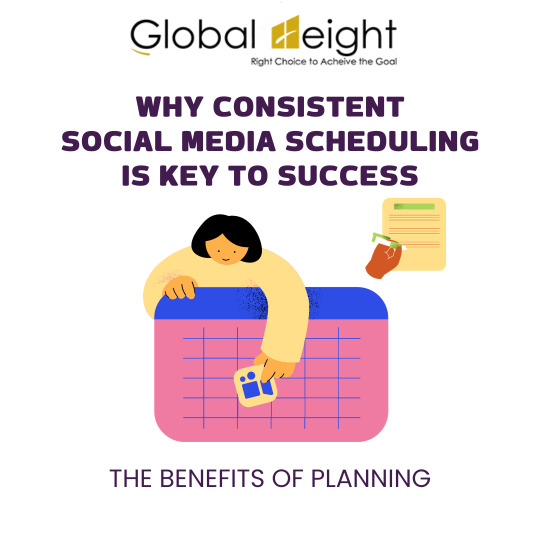






"Consistency is the secret sauce to social media success. 📆✨ #SocialMediaSuccess #ConsistencyMatters"
.
.
.
Like❤ | Follow 👉 @global-height for more information ✔
#SocialMediaSuccess#ConsistencyMatters#SocialMediaStrategy#ContentCalendar#DigitalMarketing#OnlinePresence#BrandVisibility#ContentPlanning#SocialMediaManagement#EngagementStrategy#MarketingTips#DigitalStrategy
0 notes
Text


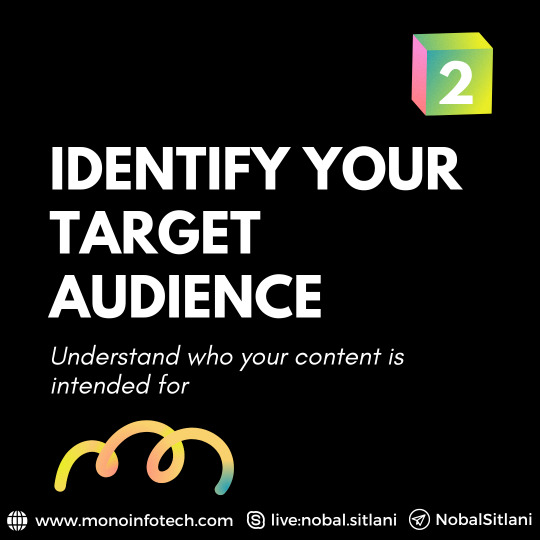

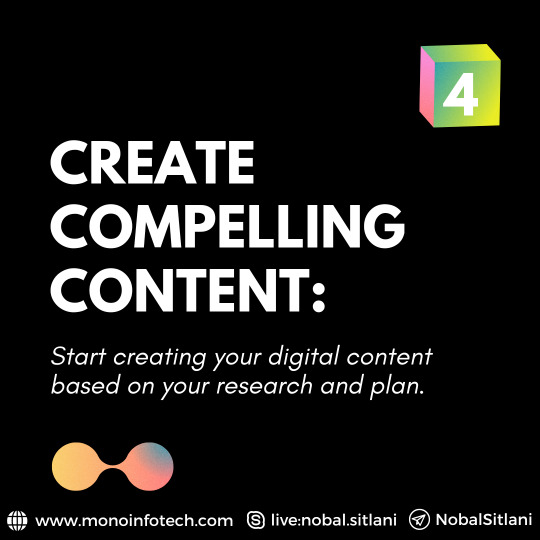
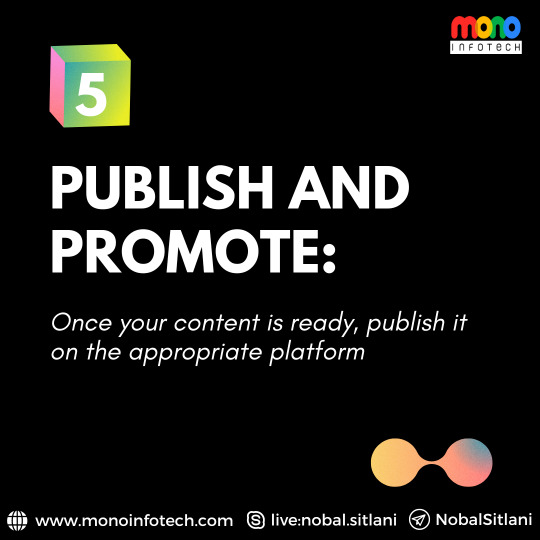

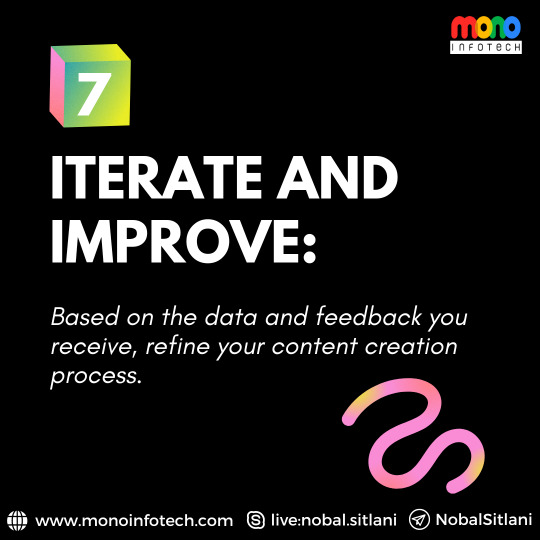
How to Create Engaging Digital Content?
Tips for a Successful #Strategy
1. - Define Your Goals - Determine the Purpose and Objectives of Your Digital Content
2. - Identify Your Target #Audience - Understand Who Your Content Is Intended for
3. - Choose the Right Format - Select the Most Suitable Format for Your Content.
4. - Create Compelling Content: Start Creating Your Digital Content Based on Your Research and Plan.
5. - Publish and Promote - Once Your Content Is Ready, Publish It on the Appropriate Platform
6. - Monitor and Analyze - Keep Track of How Your Content Performs.
7. Iterate and Improve - Based on the Data and #Feedback You Receive, Refine Your Content Creation Process.
#DigitalContent #ContentMarketing #OnlineMarketing #ContentCreation #DigitalStrategy #ContentCreators #ContentStrategy #DigitalMedia #ContentProduction
#DigitalContent#ContentMarketing#OnlineMarketing#ContentCreation#DigitalStrategy#ContentCreators#ContentStrategy#DigitalMedia#ContentProduction#ContentTrends#ContentPlanning#ContentDistribution#ContentCreatorsCommunity#DigitalPublishing#ContentTips#ContentIdeas#ContentWriting#VisualContent#ContentDesign#ContentPromotion
1 note
·
View note
Text

A successful social media strategy is a symphony of scheduling, storytelling, and sparking conversations. Play on, maestro! 🎶🗣
Call : (+91) 78789 71550, 78498 08031,
WhatsApp: 78498 08031
Visit : www.digitalcomputerclasses.com
#SocialMediaStrategy#ContentStrategy#DigitalMarketing#SocialMediaMarketing#ContentPlanning#OnlinePresence#DigitalStrategy#MarketingTips#SocialMediaTips#ContentCreation#BrandStrategy#DigitalPresence#MarketingStrategy#ContentMarketing#SocialMediaSuccess#OnlineStrategy#EngagementStrategy#ContentDevelopment#SocialMediaManagement#DigitalContent#EffectiveStrategy
0 notes
Text
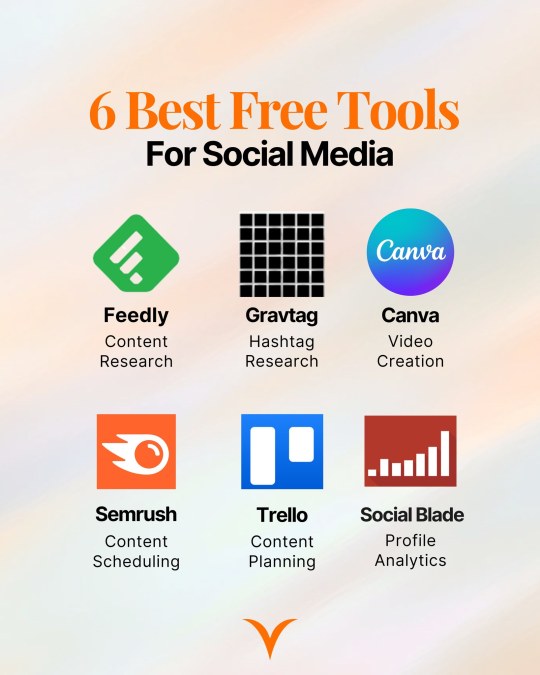
Want to save time⏰and money💰to increase your engagement on social media? 📈These free tools are a must-try.💯
.
.
.
.
Follow us for more.
#WhizCrow#SocialMediaTools#FreeTools#SocialMediaMarketing#DigitalMarketing#MarketingTools#SocialMediaManagement#ContentMarketing#ContentResearch#HashtagResearch#VideoCreation#ContentScheduling#ContentPlanning#ProfileAnalytics
0 notes
Text
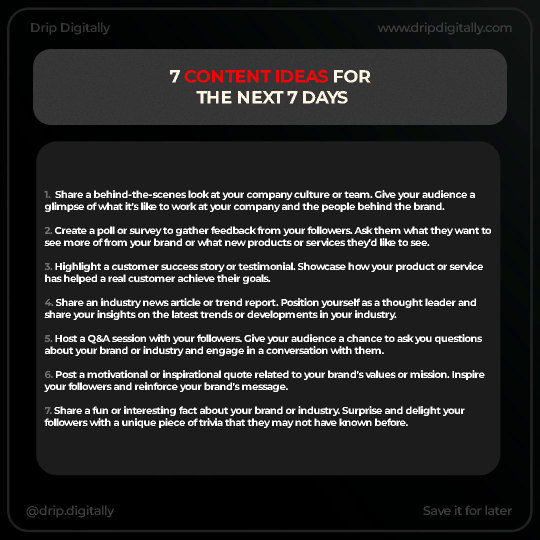
Tired of struggling to come up with fresh content ideas?
.
We've got you covered! Here are 7 content ideas to inspire your next week of posts.
.
But remember, consistency is key, so start planning ahead with a content calendar and watch your social media presence thrive. Get ready to crush the next 7 days of content creation!
.
Follow me @dripdigitally for more tips like this!
#contentideas#contentcreation#socialmediamarketing#contentmarketing#socialmediatips#brandawareness#onlinemarketing#digitalmarketing#contentstrategy#ContentPlanning#contentcalendar#socialmediastrategy#marketingideas#marketingtips#igcontent#igmarketing#socialmediaplanning#socialmediacalendar#ContentInspiration#contentcreators#contentcreatorscommunity#creativecontent#engagingcontent#marketinginspiration#marketingstrategy#contentcurator#contentcreationtips#socialmediagoals
0 notes
Text
Master the Art of Content Creation with These Simple Tips
Content creation is a crucial aspect of any digital marketing strategy. Creating high-quality, engaging content is essential to attract and retain audiences, build brand awareness, and drive business growth. Whether you're new to content creation or looking to take your skills to the next level, this article will provide you with simple tips and strategies to help you master the art of content creation. We'll cover everything from content planning and optimization to distribution and promotion, giving you a comprehensive overview of the key elements of a successful content strategy.Key Takeaways
- Content creation is a vital component of any digital marketing strategy.
- Creating high-quality, engaging content is essential for attracting and retaining audiences.
- A successful content strategy involves planning, optimization, distribution, and promotion.
- Continuous learning and improvement are key to mastering the art of content creation.
- Stay tuned for tips and strategies to help you improve your content creation skills.
Understanding Content Creation and Its Significance
Content creation is the process of producing and sharing valuable information to attract and retain a clearly defined audience. It is a critical component of content marketing, which focuses on creating and distributing relevant content to attract and engage a target audience and ultimately drive profitable customer action. A solid content strategy is essential to ensure that your content creation efforts align with your business goals and resonate with your audience. A well-executed content strategy can increase your brand awareness, establish your authority in your industry, and ultimately drive conversions."Content marketing is a commitment, not a campaign." -Jon BuscallCreating a content strategy involves identifying your target audience, determining your unique value proposition, and establishing your brand voice and tone. It also includes developing a plan for content creation, distribution, and promotion and regularly measuring and analyzing your results to refine your approach.
Developing an Effective Content Generation Plan
Creating great content starts with a well-designed and executed content generation plan. A robust plan helps you identify your audience, research topics that resonate with them and create content that engages them. A well-executed plan saves time, effort and resources, and sets you up for success in the long run.Identify your target audienceThe first step in developing a content generation plan is identifying your target audience. Your audience determines the tone, style and content that you create. Take time to understand their pain points, interests, and values. Creating buyer personas can help you create targeted content that’s relevant for your audience. Conduct researchThe next step is conducting research to identify content ideas that resonate with your audience. Look at their search patterns, social media behavior and purchase history. You can also conduct surveys, focus groups, and online polls to collect data on their preferences. Use this data to inform your content generation plan.Brainstorm Content IdeasOnce you have a good understanding of your audience and their preferences, it’s time to brainstorm content ideas. Consider creating different types of content, such as blog posts, infographics, videos, and webinars. Your content should be informative, engaging, and of value to your audience.
Content Type
Pros
Cons
Blog Posts
Easy to create, SEO friendly, promotes thought leadership
Can be time-consuming, requires consistent updates
Infographics
Visually engaging, easy to share, appeals to different learning styles
Can be expensive, requires design skills
Videos
Engaging, easy to share, appeals to different learning styles
Can be expensive and time-consuming to produce
Create a Content CalendarWith a list of content ideas, it’s time to organize them to create a content calendar. A content calendar helps you plan and execute your content generation plan. It also helps you avoid last-minute scrambling for content ideas. Your content calendar should include the type of content, the topic, the target audience, the publishing date, and the distribution channels.ConclusionAn effective content generation plan is the foundation of any successful content marketing strategy. By identifying your target audience, conducting research, brainstorming content ideas, and creating a content calendar, you ensure that your content is relevant, engaging, and valuable to your audience. With a well-executed plan, you will drive traffic, generate leads, and build a loyal following.
Optimizing Your Content for Maximum Impact
Creating high-quality content is only half the battle when it comes to successful content marketing. To ensure that your content reaches the right audience and resonates with them, it's crucial to optimize it for both search engines and users.Perform Keyword ResearchBefore creating your content, it's essential to perform keyword research to identify the terms and phrases your target audience is searching for on search engines. Once you have a list of keywords, strategically incorporate them into your content to increase its chances of appearing in search results.Utilize On-Page Optimization TechniquesOn-page optimization refers to the elements of your content that can be optimized for both search engines and users. This includes the page title, meta description, header tags, and image alt tags. By including relevant keywords and making your content easy to navigate, you can improve its visibility and user experience.Create Engaging, Shareable ContentIn addition to optimizing your content for search engines, it's crucial to make it engaging and shareable for users. This includes incorporating multimedia elements such as images and videos, formatting your content for readability, and providing value to your audience.
"Optimizing for search and user experience should go hand-in-hand. It's all about creating content that is both helpful and discoverable."
- John Smith, SEO Expert
By following these optimization techniques, you can ensure that your content is reaching the right audience, providing value, and driving engagement. Remember to continuously monitor and refine your content to stay ahead of the competition and stay relevant in your industry.
Effective Content Distribution Strategies
Your content creation efforts are only valuable if they reach the right audience. That's where content distribution comes in. By leveraging various platforms and channels, you can ensure that your content reaches a wider audience, increasing engagement and driving traffic to your website.Social MediaSocial media is one of the most effective channels for distributing your content. Platforms like Facebook, Twitter, and LinkedIn allow you to share your content with your followers, who can then share it with their networks. To maximize the impact of your social media efforts:
- Choose the right platforms based on your target audience and content type
- Create engaging headlines and visuals that encourage sharing
- Post at optimal times for each platform
- Engage with your followers and respond to comments
Email MarketingEmail marketing can also be an effective way to distribute your content. By sending targeted emails to your subscribers, you can drive traffic to your website and keep your audience engaged. To make the most of your email marketing:
- Segment your email list based on interests and behaviors
- Use catchy subject lines that encourage opens
- Personalize your emails with dynamic content
- Include clear calls-to-action that encourage clicks
Influencer PartnershipsCollaborating with influencers in your industry can help you reach new audiences and build credibility. By partnering with influencers, you can get your content in front of their followers, who are likely to be interested in your brand. To leverage influencer partnerships:
- Identify influencers with a relevant and engaged audience
- Create content that aligns with their brand and audience
- Reach out to them with a personalized pitch or proposal
- Provide value to the influencer in exchange for their promotion
With these effective content distribution strategies, you can increase the reach and impact of your content, driving engagement and ultimately growing your business.
Promoting Your Content for Increased Engagement
Creating high-quality content is crucial, but promoting it effectively is just as important. Without effective promotion, your content may never reach its intended audience, and all your hard work will be for nothing. In this section, we'll explore some strategies for promoting your content to drive engagement and increase visibility.Utilize Paid AdvertisingPaid advertising can be a highly effective way to increase your content's reach and drive traffic to your website. Platforms like Google Ads and social media advertising allow you to target specific audiences based on demographics, interests, and behaviors. This ensures that your content is being shown to the right people, increasing the likelihood of engagement and conversion.When using paid advertising, it's important to develop clear goals and a budget to ensure that you're getting the most out of your investment. It's also important to continuously monitor and adjust your campaigns based on performance data to ensure that you're maximizing your ROI.Promote on Social MediaSocial media is an invaluable tool for promoting your content and reaching a wider audience. Platforms like Facebook, Twitter, and Instagram allow you to share your content with your followers and engage with them in real-time. Using relevant hashtags and tagging influencers in your posts can also help to increase visibility and reach.When promoting on social media, it's important to tailor your content to each platform and its audience. For example, posts on Twitter should be shorter and more concise, while posts on Facebook can be longer and more detailed. It's also important to engage with your followers by responding to comments and messages, and sharing user-generated content to build a sense of community.Engage in Outreach EffortsOutreach efforts, such as guest posting and influencer partnerships, can be highly effective ways to promote your content and reach new audiences. By collaborating with others in your industry, you can tap into their existing audience and leverage their credibility to increase your own visibility.When engaging in outreach efforts, it's important to approach potential partners with a clear value proposition and a well-defined goal in mind. It's also important to ensure that your content is of high quality and relevance to the partner's audience.Email Marketing CampaignsEmail marketing campaigns can be a highly effective way to promote your content to your existing audience and drive engagement. By developing targeted email campaigns based on interests and behaviors, you can ensure that your content is being delivered to the right people at the right time.When developing email marketing campaigns, it's important to use attention-grabbing subject lines and to focus on creating value for the reader. Providing exclusive content or discounts can help to increase engagement and drive conversions.All of these strategies can be highly effective in promoting your content and driving engagement. However, it's important to test and refine your approach over time to ensure that you're getting the most out of your efforts.
Managing Your Content Workflow Efficiently
Managing your content workflow efficiently is essential to ensure a consistent stream of high-quality content. Whether you're a one-person team or part of a larger organization, implementing effective content management strategies will help you stay on top of your content creation goals."Good content is not storytelling. It's telling your story well." - Ann HandleyHere are some tips to help streamline your content workflow:
- Create an Editorial Calendar: An editorial calendar is a great way to plan and organize your content. This will allow you to see what content needs to be created, who is responsible for creating it, and when it needs to be published. There are numerous tools available to help you create an editorial calendar, including Trello, Asana, and CoSchedule.
- Use Content Scheduling Tools: Content scheduling tools can help you save time by allowing you to schedule your content in advance. This ensures that your content is published consistently and on time. Some popular content scheduling tools include Hootsuite, Buffer, and Later.
- Collaborate Effectively: Collaboration is important, especially when working on larger content projects. Using collaboration tools like Google Docs, Dropbox, and Trello can help you work more efficiently with your team.
By implementing these tips and utilizing available content management tools, you can ensure that your content workflow is efficient and productive.
Mastering the Art of Content Writing
Content writing is an essential aspect of successful content creation and marketing. It requires a combination of creativity, research, and attention to detail to craft high-quality content that engages readers and meets the needs of search engines algorithms. Here are some tips to help you master the art of content writing:1. Start with a Clear StrategyBefore you start writing, it's essential to have a clear understanding of your content strategy. Identify your target audience and their needs, determine the best format and tone for your content, and decide on the key messages you want to convey. With a strategy in place, you'll be able to write with purpose and direction.2. Write for Your AudienceIt's crucial to keep your audience in mind when writing content. Think about what they need and want, and write in a way that speaks to them directly. Use language that is easy to understand, and avoid industry jargon or technical terms unless your audience is familiar with them.3. Use Engaging Headlines and SubheadingsYour headlines and subheadings should entice readers to continue reading. Use action words and descriptive language to grab their attention and clearly communicate the main point of the section.4. Use Formatting to Enhance ReadabilityBreak up your content into easy-to-digest chunks using formatting techniques such as bullet points, numbered lists, and short paragraphs. Use bold and italics to highlight key points and draw the reader's eye to important information.5. Tell a StoryPeople love stories, and incorporating storytelling into your content can make it more engaging and memorable. Use anecdotes, personal experiences, and case studies to illustrate your points and make your content more relatable.6. Incorporate Keywords StrategicallyKeywords are essential for optimizing your content for search engines, but overusing them can make your content seem spammy and detract from the reading experience. Use keywords strategically, placing them in the title, introduction, and throughout the content in a natural and relevant way.7. Edit and Proofread CarefullyBefore publishing your content, it's essential to edit and proofread carefully. Check for spelling and grammar errors, ensure that your content flows logically, and remove any extraneous information or repetition.With these tips in mind, you can create compelling content that engages your audience, satisfies search engine algorithms, and helps you achieve your content marketing goals.
Analyzing and Refining Your Content Strategy
Creating a content strategy is just the first step in building a successful online presence. Regular analysis and refinement are necessary to ensure that your strategy is effective and aligned with your goals. Here are some tips for analyzing and refining your content strategy:Measure SuccessThe first step in analyzing your content strategy is to measure your success. Use tools such as Google Analytics to track your website traffic and engagement metrics such as bounce rate, time on page, and social shares. Set goals for your content, such as increasing traffic or generating leads, and track progress towards those goals.Perform Content AuditsPerforming regular content audits can help you identify what is working and what needs improvement in your content strategy. Look at metrics such as engagement, traffic, and conversions to determine which pieces of content are resonating with your audience. Use this information to guide future content creation.Make Data-Driven DecisionsUse the data you collect from measuring success and performing content audits to make data-driven decisions about your content strategy. For example, if you notice that a particular type of content is generating a lot of engagement, consider creating more of that type of content. If a certain topic is not resonating with your audience, consider pivoting to a new topic that is more relevant.Stay Up-to-Date with Industry TrendsThe world of content marketing is constantly evolving. To stay ahead of the curve, make sure to stay up-to-date with industry trends and best practices. Attend conferences, read industry blogs, and network with other content creators to stay informed about the latest trends and strategies.Continually Refine Your StrategyBased on your data and industry knowledge, continually refine your content strategy to ensure that it remains effective and relevant. Don't be afraid to experiment with new formats, platforms, or topics. Over time, you'll develop a deep understanding of what works best for your audience and your brand.
Leveraging Content Marketing for Business Growth
Content marketing has become an essential component of modern business growth strategies. By creating and distributing valuable content, businesses can increase brand awareness, establish thought leadership, and attract and engage their target audiences.Effective content marketing requires a well-planned strategy that aligns with business goals. At the core of this strategy is a deep understanding of the target audience and the ability to create content that resonates with them.One key aspect of content marketing is lead generation. By creating content that offers value to potential customers, businesses can capture leads and nurture them through the sales funnel. This can include things like eBooks, webinars, and other types of gated content that require contact information to access.Another important aspect of content marketing is establishing thought leadership. By consistently creating high-quality content that addresses the needs and pain points of their target audience, businesses can position themselves as experts in their industry and build trust with prospective customers.Finally, content marketing can be used to increase brand awareness and drive traffic to a business's website.
Read the full article
#contentcreation#contentdistribution#contentgeneration#contentmanagement#contentmarketing#contentoptimization#contentplanning#contentpromotion#contentstrategy#contentwriting
0 notes
Text
Create Engaging Social Media Content in 2023 with These Expert Tips!

Hey there, fellow social media enthusiasts! Are you looking for ways to create innovative and engaging content on social media in 2023? Look no further, as we've got some expert tips to help you out.
First and foremost, staying up-to-date with the latest trends is key. Incorporating the latest social media trends into your content can keep your audience engaged and interested in what you have to say. You can even try experimenting with new and emerging social media platforms to get ahead of the curve.
Another tip to consider is using time-saving content creation tools, like Wave.video. This AI video creation platform is perfect for those who don't have any prior video production experience. You can create fully-customized videos in just minutes, choosing from a library of over a million stock photos and videos, or even uploading your own. Plus, Wave.video lets you directly share your videos to your favorite social media platforms or embed them on your website.
Planning your content in advance is also crucial. Having a robust social media content plan can help ensure you always have something to share with your audience. You can even create a content calendar to keep track of your posts and make sure they align with your business goals.
Don't be afraid to experiment with different types of content, like immersive experiences, content series, contests, Q&As, and more. These types of content can keep your audience engaged and interested in what you have to offer.
Try wave.video for Free
Creating engaging social media content in 2023 requires a social-first approach, staying on top of the latest trends, using time-saving tools, planning your content in advance, and being open to experimentation. With these tips, you can create innovative and engaging content that resonates with your audience and helps you achieve your business goals.
#social media#content creation#artificial intelligence#engagement#trends#socialmediastrategy#contentplanning#q&a#digitalmarketing#2023#socialmediamarketing#marketingtips#marketingstrategy#seo marketing
0 notes
Text
Content Planning
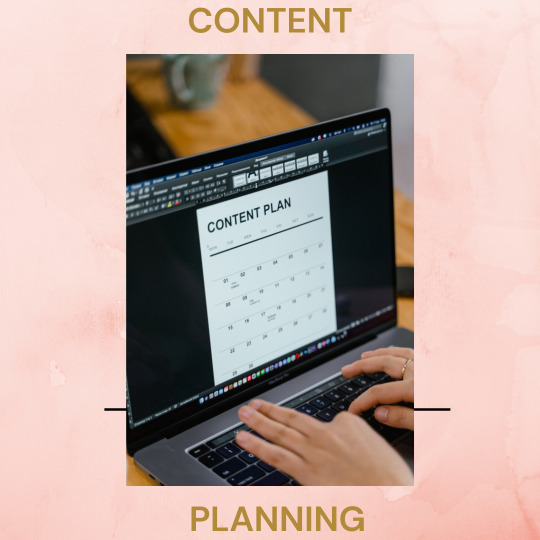
One of the things I need to learn about as a novice vlogger is how to do content planning. Content planning is basically defined as how a person determines or plans what content he/she is going to publish as well as when and where he will publish it. (Source: “Content Planning: How To Create A Content Plan, Step by Step” by Ana Camarena from Semrush; https://www.semrush.com/blog/content-planning/)
An effective content plan helps you prioritize tasks as well as helps you organize your creation process and keep track of your progress.
But how does one create an effective content plan or content strategy?
Outline Your Objectives
Understand Your Target Audience
Focus On Your Core Message
Plan The Specifics
Write A Video Production Brief
Outline Your Objectives – Before working on your content plan, know first what you want to achieve with your video content and this means identifying your objectives. It’s also important to make sure that it aligns with your business aims.
Understand Your Target Audience – Another important thing is knowing who your target audience is or who you will be speaking to through your video content. Using personas to help describe a standard person in your target audience helps.
Focus On Your Core Message – Now that you’ve determined your target audience, consider what you want them to think, feel and do after watching your content – which is where the core message gets in the picture. It helps to narrow down the messages in your video to just one content and focus on that one thing your target audience really needs.
Plan The Specifics – It’s time to decide on whether you’ll produce your video content alone or hire a video production agency as well as where and how you’ll be using your video to maximize your ROI, budget and timescale.
Write A Video Production Brief – Last but not the least , write a video production brief – this helps you condense all your planning into a single document or content.
(Source: “5 Things For Successful Video Content Planning” from Skeleton; https://www.skeletonproductions.com/insights/5-things-for-successful-video-content-planning)
0 notes